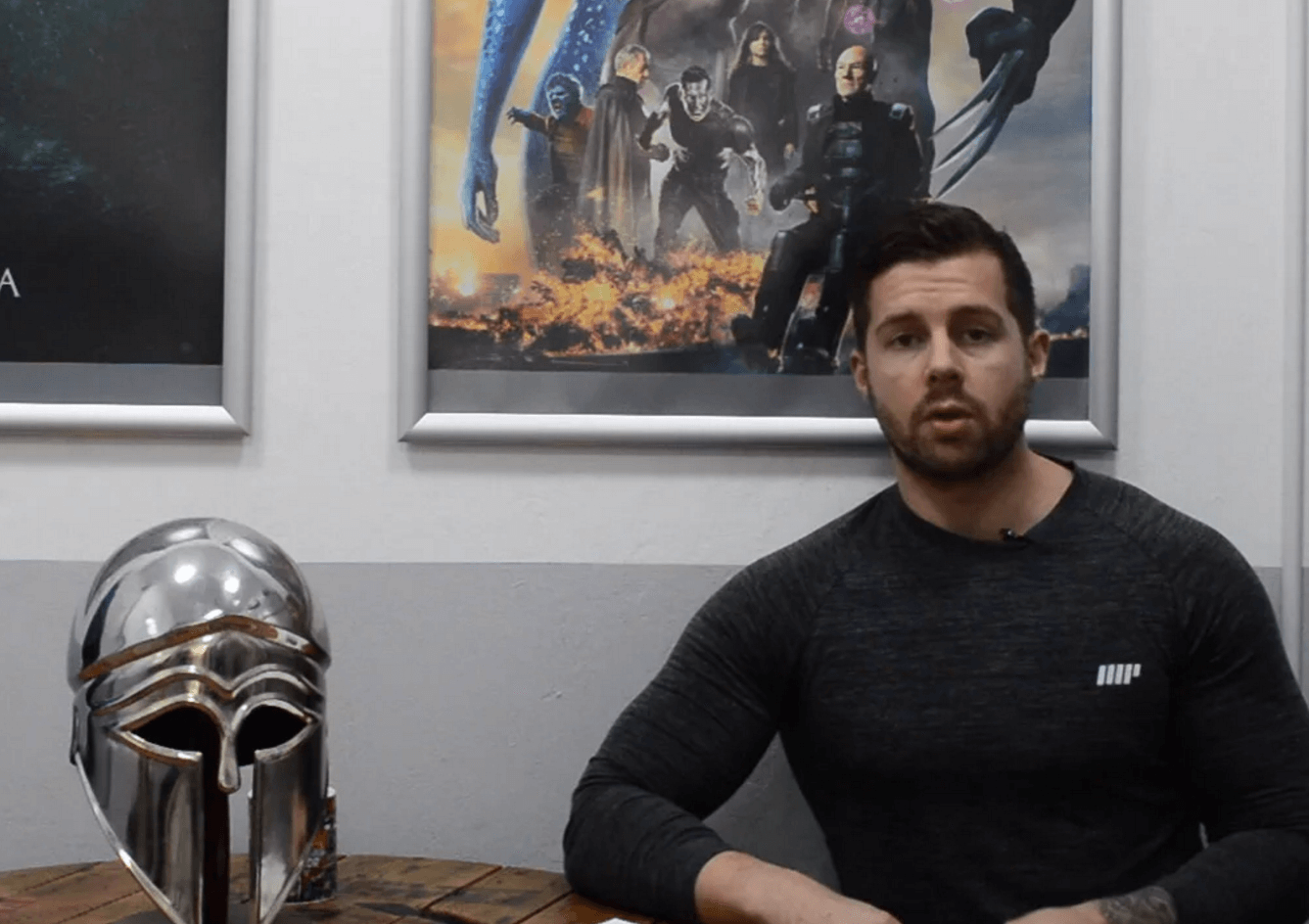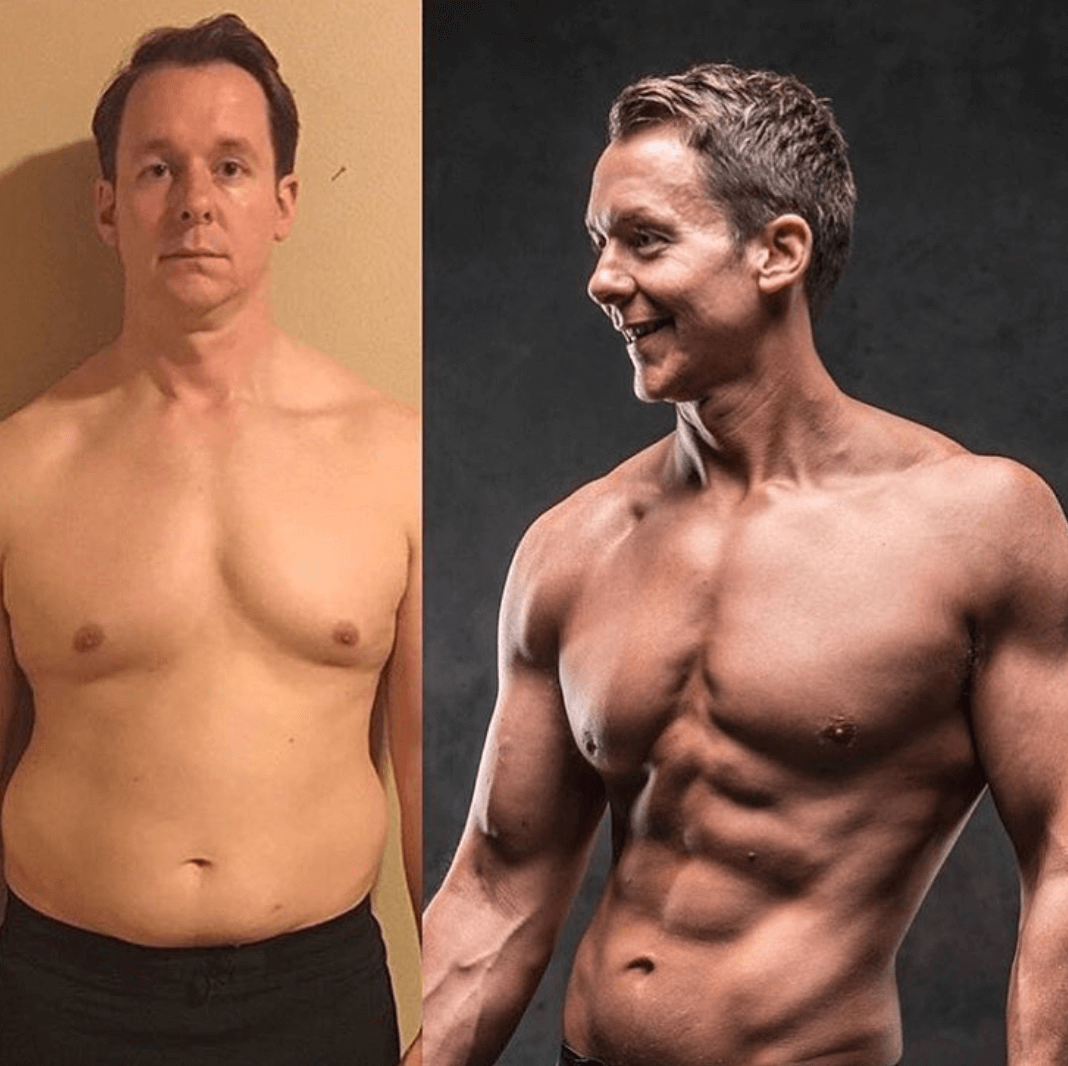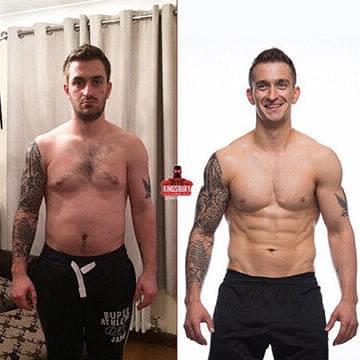I can’t thank you all enough for your support this year with #teamkingsbury
I have always tried to support and give back as much as possible to everyone who takes the time to reach out to me.
So please keep the questions coming in every week!!
mrs._b._fitHow do I get rid of and/or reduce bloat?
khawar008Does it matter what time you train? Thanks
gadllyHow do I calculate macros and how can I manipulate my macros to meet my fitness goals? Thank you#teamkingsbury
mandaduley When you’re crunched on time, what are the best tips to maximize recovery? Foam rolling and stretching seems to add a lot of time to lengthy sessions. Is it necessary within a specific timeframe after activity or can you still get benefits later in the day?
rubenmarquezIs a trap bar deadlift just as good as a deadlift using a barbell?
luca.brassi.925@teamkingsbury Any tips for maintaining diet consistency and the mental battle that develops? Training is the easy part for me as like you I look forward to it and very rarely feel like taking a day off. Cheers David!
woiks I can only manage two training sessions a week,would you recommend a lower/upper split or try and do full body in both sessions? Thanks in advance
check1984 Whats the best way to work out calorie needs and what format do you use to work it out.
saldonsear@teamkingsbury what is your favorite meal before bedÂ
Transcript of the video
David: Hi it’s David Kingsbury here thanks for tuning in for another Q&A. We had a really good response from the questions we put out on social media, for your questions. If you didn’t check out the previous one then it’s on the blog now. But yeah, let’s get into the next one today and answer your fitness questions. So what’s the first question.
Question: How do I get rid of, or reduce, bloating?
David: Okay so if you’re finding yourself bloated from the meals you’re eating there’s a few things than you can look at that will help with this. One is your tolerance to different foods. So different people work better on different foods essentially, not necessarily allergies, but just in terms of digestion, and other things. So one of the first steps you could do is look at removing certain things, maybe try the common causes, so things like dairy, wheat, those kind of things, to see if that has any positive impact on bloating. If those things don’t really help then there’s a number of other techniques I use. So one, apple cider vinegar is a great thing to have before your food, really helps with digestion. And also probiotics and digestive enzymes can be really really useful for this. Something personally I’ve found to be incredibly beneficial is not having too much water in my meals or not having very much fluid with my meals essentially. So what I do is I don’t have any water for 15 minutes before or after my meals- that’s water or any fluids of any kind- for me I really used to suffer a lot from bloating and since you know that’s making that change, not having any fluids with my meal. And it’s made a huge difference for me, also with the people that I’ve trained as well. So give all of those things a try and then see how you get on, and if it doesn’t resolve itself feel free to get back to me and we can run through some other ideas basically. Thanks. Next up.
Question: Does it matter at what time you train?
David: Yeah, I get asked this a lot. So you know, people presuming that there are better times of the day to train. Ultimately most people don’t have much choice in this right, so you train when you can train. Potentially there are better times of the day to do certain things, so some studies have shown that afternoon weight training sessions to be effective, but not everyone has the luxury of making those choices. What I would say is don’t ever let training time ever off put you from training full stop. It doesn’t matter when you’re going to train you just got to get those sessions in. If you have the luxury of choosing when you can train. Yeah you can be selective here and find what works best for you and personally I like to do my cardio first thing in the morning, and I like to do my weights in the afternoon. So when time allows I’ll stick to that, when time doesn’t allow I’ll chuck it both things first thing in the morning or fit it in whenever I can, essentially. There is some evidence and there are some studies which, you can feel free to look into that can cover this in a lot more detail than I am going to cover now, but I would just say, ultimately,just get your training sessions done. That’s the priority right there is actually just getting the sessions done. Hope that helps. Next up.
Question: How do I calculate my macros and how can I manipulate my macros to meet my fitness goals?
David: Yes we talked about macros a lot in the first video and macros is such a popular topic at the moment because it’s become very mainstream in the sense that people are reading up on it and they’re beginning to understand it. But ultimately it’s quite complicated and it’s quite a complicated system you have to be able to figure out and use in order to balance those out to hit your calories. It’s not straightforward, so if you are looking to do that yourself you’re going to have to do your homework basically, you’re really going to have to study up, you’re going to have to learn that what the different macros are, the foods you’re eating. But then also looking at your body type, your goals and then determining the best macro breakdown, in terms of percentages, for you. I use a really kind of advanced system for calculating these, it’s not a one fits for all. So different people on my training plans will have different setups. So we’ll look at things from body fat levels and waste measurement to activity level to age, for example are just some of the things we will look at in determining macros. Obviously we have the advantages of advanced nutrition software which we will utilise for making sure than when we balance out the meals and design the meals the menus are accurate and the macros are accurate and therefore you are hitting your calories. So I would say that it’s great if you want to learn about your macros and you’re trying to understand this but it is not a simple task. Your options are either get your study head on and really learn up on this stuff. Or you know, for the sake of paying a nutritionist or a trainer to calculate your macros and your calories. It’s going to save yourself months of education and work essentially. Hope that helps. Next up.
Question: When you’re crunched on time what’s the best tip to maximise recovery, foam rolling and stretching seems to add a lot of lengthy time to the end of my session? Is it necessary within a specific time frame, after activity, or can you still benefit later in the day?
David: Yeah, so a lot of the training plans you’ll see written online and shared, they have an unrealistic amount of this kind of stuff. They’ll say go and do your twenty minute warm up with your foam rolling and your stretching and do your session, and then you follow up with another twenty minutes of stretching and foam rolling and these kind of things. But for most people it’s quite unrealistic to try and fit that in every day. I mean, I know when I’m busy my sessions are cut to forty five minutes and that’s from the second I start to the second I finish. When you are crunched for time obviously those kind of things do get neglected around training time. But you can certainly implement them at other times of the day so they don’t have to be immediately after the session to be beneficial. The foam roll and the trigger pointing and your mobility drills you can do while watching tv in the evenings for example. I mean that’s when I tend to implement it for myself. It’s time where you can get that done when you wouldn’t necessarily be doing anything else. So you can certainly look to implement them during other times of the day and you’re still going to see benefits from that. I would say if you are suffering from any specific problems then it is more important to keep a certain amount of that around your training time. For example when I do back squats I get a little bit of trouble on my left glutes and I have been for a few months. If I do a bit of trigger pointing with the hockey ball and some foam rolling there it massively helps me resolve that issue and I don’t suffer from that session. So for me as an example I’ll do that for 5, 10 minutes before the session, whereas on other sessions it’s less important, where I know it’s a bit of a smoother session for me I’ll fit those other things at other times of the day essentially. Hope that helps and next question please.
Question: Is the trap bar deadlift just as good as a deadlift using a barbell?
David: Yes so the trap bar deadlift and the deadlift tend to be clustered together as exercises. They are not identical exercises by any means, however they are similar. So ultimately it really depends on your goals and what you’re using those exercises for, and your ability level at both of those exercises. So for example if you come to me and say I can’t deadlift to save my life but I can trap bar my dead lift. Of course you’re going to go for the trap bar deadlift, so you get into the sessions heavier sooner with far less risk. And for that reason I tend to use trap bar deadlifts a lot in my training plans, especially when they’re looking to achieve results quite quickly. Because the trap bar deadlift is an easier movement to learn and for most people the teaching points and that initial learning phase is easier by a deadlift. And that’s not to say that straight bar deadlift is not a useful tool, I often use both of these lifts in training plans and it might be a case of starting with a trap bar and then transitioning into the deadlift. Or I often use as alternate exercises. So when the straight bar strength plateaus you can try pushing onto the trap bar and you can use them to essentially help the other improve. They’re both great exercises, so you can by all means go and do both, but if you’re more comfortable with one or the other you can go for it and then transition away from that one once the progress stops or makes slight changes once the progress stops. Hope that helps. Next up.
Question: Any tips for maintaining hard consistency in the mental battle that develops? Training is the easy part for me.
David: Yeah, so diet is the hard part for everyone, right. Training is being in the gym an hour four times a week, five days a week, six days a week whatever that is. Whereas the nutrition side of things is a much greater challenge. There’s much more temptation and there’s much more room for error with the nutrition side of things. It’s very easy to sabotage a whole week of training just with a couple of days of poor nutrition choices. Ultimately this just comes down to how much you want it. If you really want it you’re going to do the work required to get the results. That’s it. It really is that simple, if you’re really focused and its what you want to achieve you’ve just got to put the work in, you’ve got to prep your food, you’ve got to be strict, and you just got to stick at it. For me that’s what keeps me motivated, that if I’m looking to change my body to push things to the next level I want it. I’m not going to be playing around. I’m not just going to be hitting my sessions and having fun. It’s going to be, it’s everything’s done for a reason so I would say perhaps it’s a case of looking at your motivation and seeing if there’s an improvement on that side of things, because that’s going to help. It’s going to help you keep on the right path with your food, essentially. Keep at it, keep working hard. Prep your meals get into the routine and keep working for it. Hope that helps. Next up.
Question: If I can only manage two training sessions a week would you recommend a lower upper split?
David: It’s slightly goal dependent, if your goal is fat loss, for example, you might be more of a circuit style session, but presumably it’s more of a muscle style maintenance or increase muscle. Because you’re talking about spilt routine. So what I say is total body is the way to go for these. If you’re only training twice a week then it’s going to be really important to hit as many muscles as possible to hit the right overall stimulus. I would say you’ve got to focus on those compound lifts, got to focus on those squats, deadlifts, chin ups, barbell shoulder press, barbell bench press, and really focus on those as your prime movements. You’ve got to get fair on these sessions as well just to really make sure you’re really stimulating your body to adapt to them. But yeah I would say total body is the way to go for this. Thanks for yoru question hope that helps. Next up.
Question: Once you’ve finished with the vigorous hypotherapy routines and are happy with your size can you maintain the gains by just doing two days of powerlifting routines?
David: Okay so if you’ve done a hypotherapy phase and have caught some serious muscle, then once you got it it’s absolutely easier to maintain. So you can reduce the training volume to maintain that. What I would say is you’re still going to have to keep a certain amount of training there. So two sessions a week, potentially yeah you could maintain it with that. It does depend on your genetics and the level you’re at ultimately yeah if you’re doing two really focused training sessions you could look to maintaining it at that. Obviously the major side of things is still the nutrition, obviously you’ve got to get the nutrition on point you’ve got to make sure you’re getting enough protein in. But with two really focused training sessions by all means you could maintain muscle mass. Hope that helps. Next up.
Question: What is your favourite meal before bed?
David: Before bed. Okay so I don’t snack particularly, I have my last meal at six, seven o’clock most nights, or if I’m working late, maybe 8 or 9. And that will be the last thing I eat in the evenings and I won’t have anything to eat before bed. For me eating foods before bed has a negative impact on my sleep and I try not to eat so frequently it helps my digestion and my energy levels and my recovery and plenty of other things so my meal frequency is kept to 3 or 4 meals a day. For my evening meals it depends on what I’ve been doing that day. So if it’s been a heavy training day we’re looking at carbs, proteins, fats, veg. If I’m cutting and it’s a non training day it’s going to be fats, proteins and veg. And that’ll be all the normal stuff right. Carbs coming from quinoa, rice, sweet potato etc etc. The fats are going to be coming from nuts, seeds, avocados, oils. The proteins, meat,eggs,fish etc. And the veg mainly green I prefer, asparagus, spinach, broccoli all those kind of things. Occasionally I’ll have something like a skia yoghurt or something like this, so a high protein yoghurt after my meal. But of course it’s still part of that meal. Typically I don’t eat straight before I go to sleep, as I don’t find it to be beneficial in any way. Hope that helps with that. So that’s another week of questions. Hope you find the answers useful. This is something I hope I’ll try to be doing every single week. If you have anything that’s on your mind, any questions you’d like to ask me feel free to send them over. I’ll put a post on social media and it would be great for me to get more questions in and to continue to help.










